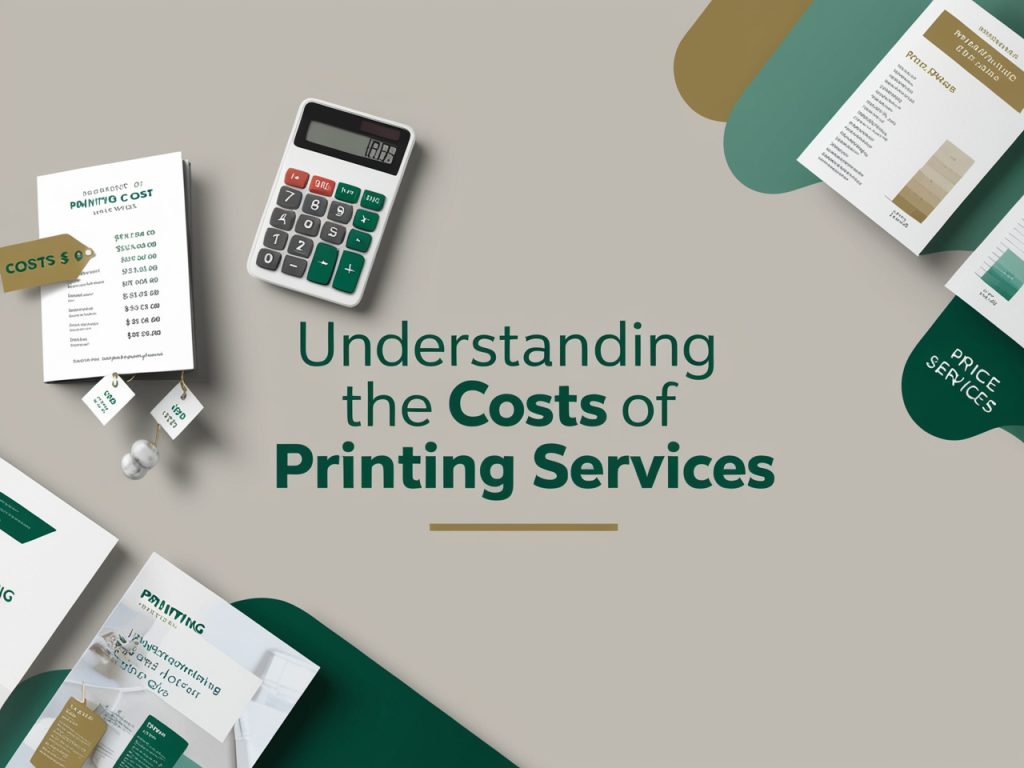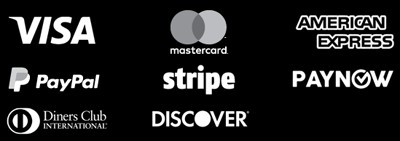
When planning a print project, understanding the various factors that influence printing costs is crucial for managing your budget. Printing services can vary significantly in price depending on factors such as materials, volume, finishes, and turnaround times. In this guide, we’ll break down the key components that affect the costs of printing services and provide tips on how to make cost-effective decisions without compromising on quality.
1. Key Factors That Affect Printing Costs #
The cost of printing services is determined by several key factors. Here’s a breakdown of the primary elements that contribute to the overall cost:
1.1 Print Quantity #
- What It Is: The number of copies you need for your print project.
- Impact on Cost: Larger print runs typically lower the cost per unit, making it more economical for high-volume projects. Conversely, small print runs can have a higher cost per unit due to setup fees and production processes.
- Best For: Bulk orders like brochures, catalogs, and flyers benefit from larger print quantities to reduce the per-unit cost.
1.2 Type of Printing Method #
- What It Is: The printing technique used, such as digital printing, offset printing, or screen printing.
- Impact on Cost:
- Digital Printing is cost-effective for short runs and customizable projects but can become expensive for large quantities.
- Offset Printing has a higher setup cost but is more economical for large print runs due to lower per-unit costs after setup.
- Screen Printing is best for large quantities of items like apparel or banners, but small runs can be costly.
- Best For: Choose digital printing for short runs and personalized items, and offset printing for large-volume projects like magazines, books, or product packaging.
1.3 Paper Type and Quality #
- What It Is: The material used for the printing surface, such as paper stock, cardstock, or specialty materials.
- Impact on Cost:
- Standard Paper is the most cost-effective, but upgrading to premium paper (e.g., textured, recycled, or glossy paper) can increase the cost.
- Heavier cardstocks (measured in GSM—grams per square meter) or specialty papers (e.g., FSC-certified or recycled paper) are typically more expensive.
- Best For: Choose standard paper for everyday projects like flyers, but invest in high-quality paper for premium products like business cards, brochures, or wedding invitations.
1.4 Color vs. Black and White Printing #
- What It Is: Whether the project is printed in full color (CMYK) or black and white.
- Impact on Cost: Color printing is more expensive than black and white due to the cost of color inks and the complexity of the printing process. Projects requiring Pantone or spot colors (for precise color matching) can further increase costs.
- Best For: Use black and white for simple documents, invoices, or forms, and color printing for marketing materials, product packaging, and brochures.
1.5 Finishing Options #
- What It Is: Additional processes applied after printing, such as lamination, embossing, spot UV, or foil stamping.
- Impact on Cost:
- Lamination (gloss or matte) adds durability and a polished look but increases costs.
- Embossing/Debossing adds texture to the design, while foil stamping adds a metallic finish—both of which can be costly.
- Binding options (saddle stitching, perfect binding, spiral binding) vary in price depending on complexity and material.
- Best For: Use finishing options for premium materials such as business cards, brochures, or product catalogs that need a high-end look.
1.6 Turnaround Time #
- What It Is: The speed at which your order needs to be printed and delivered.
- Impact on Cost: Rush orders or same-day printing services typically cost more due to the need for expedited production and prioritization. Standard turnaround times (e.g., 3-5 business days) are more affordable.
- Best For: Plan ahead to avoid rush fees, especially for large orders. Use expedited services for time-sensitive projects like event promotions or last-minute marketing materials.
1.7 Customization and Personalization #
- What It Is: Adding customized elements to each print item, such as variable data printing for names, addresses, or personalized offers.
- Impact on Cost: Personalization adds to the cost due to the additional setup and processing required for each unique item. However, digital printing makes personalization more cost-effective compared to traditional methods.
- Best For: Direct mail campaigns, personalized invitations, or marketing materials that require individual customization.
2. Cost Comparison: Digital vs. Offset Printing #
Understanding the cost differences between digital and offset printing can help you choose the best method for your project:
2.1 Digital Printing #
- Advantages:
- No setup fees, making it cost-effective for small runs and personalized projects.
- Quick turnaround times, ideal for urgent jobs or small, custom orders.
- Disadvantages:
- Higher per-unit costs for larger quantities compared to offset printing.
- Limited to certain paper sizes and finishes compared to offset.
- Best For: Small runs (e.g., 100-500 units), personalized direct mail, or short-run marketing materials.
2.2 Offset Printing #
- Advantages:
- Economical for large print runs due to lower per-unit costs after setup.
- Offers a wider range of paper stocks, inks, and finishes, including spot colors and specialty finishes.
- Disadvantages:
- High initial setup costs due to the creation of printing plates, making it less suitable for small runs.
- Longer turnaround times compared to digital printing.
- Best For: Large quantities (e.g., 1,000+ units), magazines, books, product packaging, or high-volume brochures.
3. How to Save on Printing Costs #
Here are some practical tips for reducing the cost of your print project without sacrificing quality:
3.1 Print in Bulk #
- Why It Works: Printing larger quantities reduces the cost per unit. If you anticipate needing more copies later, it may be more cost-effective to print in bulk upfront rather than ordering smaller runs multiple times.
- Best For: Brochures, flyers, product packaging, or business cards.
3.2 Choose Standard Sizes #
- Why It Works: Using standard paper sizes like A4, A5, or US Letter helps minimize waste and avoids custom cutting fees.
- Best For: Flyers, brochures, posters, and business documents.
3.3 Opt for Black and White Printing #
- Why It Works: Black and white printing is significantly cheaper than full-color printing. Use black and white for internal documents or projects where color isn’t essential.
- Best For: Forms, invoices, reports, or simple marketing materials.
3.4 Select Cost-Effective Paper #
- Why It Works: Choose standard or mid-range paper options instead of premium, textured, or custom stocks. For projects that don’t require a luxurious feel, regular paper works well and is much more affordable.
- Best For: Everyday flyers, newsletters, or internal documents.
3.5 Simplify Finishing Options #
- Why It Works: Reducing or eliminating complex finishes like foil stamping, embossing, or spot UV can significantly lower costs. Consider simpler options like gloss or matte lamination.
- Best For: Brochures, business cards, or product packaging.
3.6 Plan Ahead to Avoid Rush Fees #
- Why It Works: Last-minute orders often come with rush fees. By planning and ordering in advance, you can avoid paying extra for expedited production and shipping.
- Best For: Any print project, especially large-volume orders or marketing materials with firm deadlines.
3.7 Use Recycled Paper #
- Why It Works: Recycled paper is often more affordable than premium stocks and has the added benefit of being environmentally friendly. It’s a great option for eco-conscious businesses looking to reduce costs and their environmental footprint.
- Best For: Brochures, business cards, packaging, and flyers.
4. Additional Printing Costs to Consider #
Aside from the core elements like paper and printing method, there are other costs that you should factor into your budget:
4.1 Shipping and Handling Fees #
- What It Is: Depending on your location and the size of your order, shipping costs can vary. Large or heavy orders (e.g., bulk catalogs or banners) may require freight shipping, which can be more expensive.
- Tip: Choose local printing services if possible to reduce shipping costs or use standard shipping for non-urgent orders.
4.2 Proofing Costs #
- What It Is: Some printers charge extra for proofing services, particularly for physical proofs. A proof allows you to review a sample of your print project before final production.
- Tip: Digital proofs are usually free, while physical proofs may incur additional costs. Choose a digital proof unless color accuracy or complex design requires a physical proof.
4.3 Setup Fees #
- What It Is: For projects using offset printing, setup fees include the cost of creating printing plates and calibrating the machine. These are one-time fees but can increase the upfront cost of a project.
- Tip: Offset printing is more cost-effective for large print runs due to these setup fees being amortized over the order size.
4.4 Customization Costs #
- What It Is: Personalization, such as variable data printing (changing text or images for each piece), can increase the cost due to additional data processing and production setup.
- Tip: If personalization is necessary, use digital printing to minimize setup costs.
Conclusion #
Understanding the various factors that influence printing costs can help you make informed decisions when planning your print project. From choosing the right printing method and materials to optimizing design and managing turnaround times, there are many ways to control costs without sacrificing quality. By planning ahead, selecting cost-effective options, and working with a reliable printing partner, you can achieve the desired results while staying within budget.
You can find free business card templates on Freepik.
Learn more about the different printing methods in this comprehensive guide.





